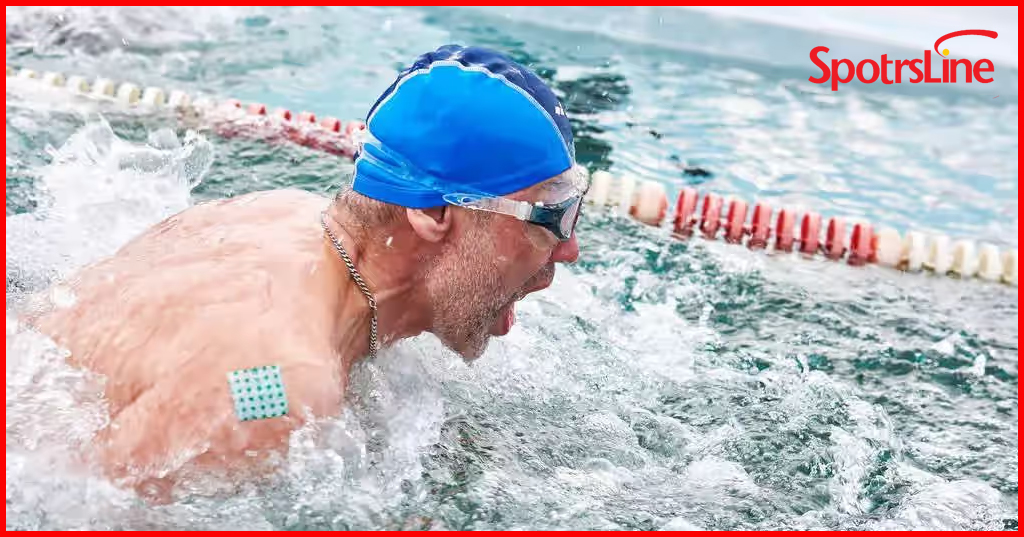
Let’s know some Freestyle swimming tips
Freestyle swimming tips 1 (general tips):
(1) When swimming freestyle, the body must be horizontal, with the arms crossed and moving forward. The fingers in front of the shoulders enter the water first, and the shoulders are extended and the wrists are bent to grab the water. The elbows
are high and the arms are bent, with the palms facing the water. The “S” shape should be done correctly. When the stroke ends at the hip side, the shoulders are turned and the elbows are raised to quickly exit the water.
(2) Lie prone in a streamlined position, with the water level at the back of your head. Strike once with each hand, and alternate your legs six times.
Slowly exhale as you stroke your hands under your shoulders, push the water, lift your elbows, turn your head, and inhale. With good coordination between your legs, arms, and breathing, you can swim at an incredible speed.
Freestyle swimming tips 2 (four-word tips):
The head should be rubbed against the water surface. The neck and spine should be flat and long. The chin should be retracted, and the breathing should not be high. The whole body should be strong, the waist and abdomen should be tense. The log should be rolled, and the navel should be looked at both sides. Extend the arms into the sleeves, turn the shoulders into the frame, and draw straightly close to the body, pulling softly and pushing hard. The thighs should be clamped, the calves should be like springs, and the ankles should be relaxed, with relaxation and tension.

The four key points of freestyle swimming:
[Head rubs water surface], While swimming, try to immerse your head in water, with no more than 1/4 of your head exposed above water. Just let the top of your head slightly rub the water surface.
[Neck spine is flat and long], the cervical vertebrae and spine should be pulled into a straight line and kept horizontal.
[Chin retraction], look at the bottom of the pool, retract the chin until it forms a double chin.
[Breathe with your head raised], when breathing, the head should roll around the extended line of the cervical spine, and avoid raising your head to breathe.
[The whole body should be strong], imagine that the whole body, especially the torso, is like a hard and solid torpedo.
[Tighten the waist and abdomen], tighten the waist and abdomen, and lift the Qi in Dantian.
[Log rolling] means that the body should be like a torpedo or a log, rolling rhythmically as a whole on the long axis.
[Looking to both sides from the navel], the rolling angle is just right for the navel to be able to see both sides, or the audience on both sides can just see the swimmer’s navel.
[Stretch your arms into sleeves], when entering the water, stretch your hands forward as far as possible, as if you are putting them into a slender and soft silk sleeve.
More
[Turn shoulders into the frame], imagine that your body is passing through a very narrow frame in front, so the lateral range of movement should be as small as possible.
[Strong stroke close to the body], the paddling hand should be below the long axis of the body, close to the body, and move in a straight line.
[Pull softly and push hard], start accurately, grab the water steadily, gradually speed up the stroke, push the water under your feet, but don’t let it hit your thighs.
[Thighs clamped], when kicking, the thighs cannot be separate. They play a connecting role, that is, transmitting the power of the hips to the toes.
[Calves should be like springs], the calves should be flexible. And the range of the legs should be controll at about one foot.
[Relax your ankles], your ankles should follow the pressure of the water. Move in the flow, like a fish wagging its tail, and avoid being stiff. Your legs from hip to toe should be loose but not slack, tight but not stiff. Your kicking should be powerful and rhythmic, [relaxed and tensed].
3. Freestyle swimming tips 3 (detailed tips):
(1) Introduction to Crawl Stroke (Freestyle)
Crawl swimming is like crawling in the water, with both arms paddling the water alternately.
Lie steadily in the water, cross your arms and row alternately.
Keep your body horizontal and whip your legs up and down.
Beat your legs up and down like a whip, exhale slowly and inhale quickly, and move forward.
(2) Leg movements
Use your thighs to pull your calves forward, and alternate your legs to whip the water.
Use your thighs to drive your calves, and alternate between the two legs to paddle the water.
Kick shallowly and quickly, with your ankles relaxed and slightly turned inward.
(3) Arm movements
Put your palms in front of your shoulders into the water first, slide your arms down and hold the water.
Move your arms, relax your shoulders, and move your forearms forward, with your palms facing the water.
The power of the bent arm stroke is strong. The shoulders and elbows are turn to get out of the water quickly.
Increase the speed along the center line, alternating between the two arms.
Coordinate the use of both arms to row vigorously, hugging forward and pushing backward and gradually increasing the force.
(4) Breathing movements
When you reach below your shoulders, exhale slowly, push the water, lift your elbows, and raise your head to inhale. Exhale slowly with your head in the water, turn your head and open your mouth to inhale quickly.
(5) Coordination of breathing with leg and arm movements.
Use both hands to paddle once each, and choose to do one of two, four, or six kicks with your legs, two, four, or six, and then inhale once, left or right.
(6) Body position
The body is streamlined when lying prone, with the chest slightly raise. Shoulders high and body tall, forehead and back of the head exposed at water level. Hips and abdomen level, and eyes open.
(7) Stroke type
There are three types of arm strokes: front cross, middle cross, and back cross. Front cross is use for ancient and long swimming, while middle cross and back cross are better.

One thought on “Let’s know some Freestyle swimming tips”